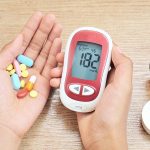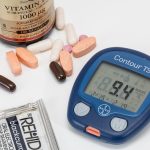Top 50 Diabetes Drugs List

Diabetes is a chronic condition affecting millions of people worldwide, characterized by elevated blood sugar levels. The global prevalence of diabetes is staggering, with a significant and concerning rise anticipated in the coming years. As of 2021, 537 million adults aged 20 to 79 are grappling with diabetes, representing one in every ten individuals in this age group. Alarmingly, projections suggest that this number will surge to 643 million by 2030 and escalate further to a staggering 783 million by 2045. These statistics paint a bleak picture of a world where diabetes is not just prevalent but is rapidly becoming a widespread health concern.
Adding a layer of complexity to this issue is the socioeconomic distribution of diabetes cases. Over three-quarters of adults diagnosed with diabetes reside in low- and middle-income countries. This demographic distribution underscores the urgent need for global health initiatives and collaborative efforts to address diabetes on a broad scale, ensuring that individuals in resource-limited settings receive adequate care and support.
The consequences of diabetes are severe, and the impact on global mortality is alarming. In 2021 alone, diabetes was responsible for a staggering 6.7 million deaths. This translates to a heartbreaking reality – one death every five seconds attributed to diabetes-related complications. These figures underscore the critical importance of implementing comprehensive strategies for diabetes prevention, early detection, and management to mitigate the devastating toll it takes on individuals, families, and communities worldwide.
The multifaceted nature of diabetes management necessitates a holistic approach, encompassing lifestyle modifications, dietary interventions, and, in many cases, pharmaceutical interventions. Among the arsenal of diabetes management tools includes 50 drugs, each serving a unique purpose in helping individuals achieve and maintain optimal blood sugar levels.
In this article, we will explore the list of 50 diabetes drugs, providing a brief overview of each class and some commonly prescribed medications.
1. Metformin: Metformin is a widely used first-line medication for type 2 diabetes. It improves insulin sensitivity and reduces glucose production in the liver.
2. Sulfonylureas: Examples include glipizide and glyburide. They stimulate the pancreas to release more insulin.
3. Meglitinides: Repaglinide and nateglinide fall into this class, promoting insulin release from the pancreas.
4. Thiazolidinediones:
Pioglitazone and rosiglitazone enhance insulin sensitivity in the body’s cells.
5. Dipeptidyl Peptidase-4 (DPP-4) Inhibitors: Sitagliptin and saxagliptin are DPP-4 inhibitors that increase insulin release and decrease glucagon production.
6. Sodium-Glucose Cotransporter-2 (SGLT2) Inhibitors: Canagliflozin and dapagliflozin reduce blood glucose levels by increasing urinary glucose excretion.
7. Glucagon-Like Peptide-1 (GLP-1) Receptor Agonists: Exenatide and liraglutide stimulate insulin release and reduce glucagon secretion.
8. Insulin: Various types, including rapid-acting, short-acting, intermediate-acting, and long-acting, are used to manage blood sugar levels.
9. Alpha-Glucosidase Inhibitors: Acarbose and miglitol slow down the digestion of carbohydrates, reducing blood sugar spikes.
10. Pramlintide: This medication mimics the effects of amylin, a hormone that regulates glucose levels.
11. Bromocriptine: Used to treat type 2 diabetes, bromocriptine works on the central nervous system to improve glucose metabolism.
12. Colesevelam: Primarily used to lower cholesterol, colesevelam may also help control blood sugar levels.
13. Empagliflozin: An SGLT2 inhibitor, empagliflozin is used to treat type 2 diabetes.
14. Linagliptin: A DPP-4 inhibitor, linagliptin helps regulate blood sugar levels.
15. Alogliptin: Another DPP-4 inhibitor, alogliptin is used to improve glycemic control.
16. Canagliflozin: Part of the SGLT2 inhibitor class, canagliflozin is prescribed for type 2 diabetes.
17. Dapagliflozin: Similar to canagliflozin, dapagliflozin is an SGLT2 inhibitor.
18. Sitagliptin: A popular DPP-4 inhibitor, sitagliptin helps manage blood glucose levels.
19. Saxagliptin: Another member of the DPP-4 inhibitor class, saxagliptin is used in diabetes management.
20. Insulin Aspart: A rapid-acting insulin analog used to control post-meal glucose levels.
21. Insulin Glulisine: Another rapid-acting insulin analog with a quick onset of action.
22. Insulin Lispro: A fast-acting insulin used to manage mealtime blood sugar spikes.
23. Insulin Detemir: An intermediate-acting insulin providing extended blood sugar control.
24. Insulin Glargine: A long-acting insulin that provides a consistent basal level of insulin.
25. Insulin Degludec: An ultra-long-acting insulin offering extended blood sugar control.
26. Insulin Isophane: An intermediate-acting insulin commonly used for basal insulin coverage.
27. Insulin Regular: A short-acting insulin used for various insulin therapy regimens.
28. Dulaglutide: A GLP-1 receptor agonist administered once weekly for better adherence.
29. Albiglutide: Another weekly GLP-1 receptor agonist offering extended blood sugar control.
30. Lixisenatide: A GLP-1 receptor agonist used to improve glycemic control.
31. Semaglutide: An injectable GLP-1 receptor agonist with a once-weekly dosing option.
32. Gliclazide: A sulfonylurea commonly prescribed to stimulate insulin release.
33. Gliquidone: Another sulfonylurea with insulin-stimulating properties.
34. Glimepiride: A sulfonylurea that helps increase insulin production.
35. Linagliptin/Metformin Combination: A combination medication incorporating both a DPP-4 inhibitor and metformin.
36. Pioglitazone/Metformin Combination: A combination of thiazolidinedione and metformin for dual action.
37. Glimepiride/Rosiglitazone Combination: A combination medication providing the benefits of both sulfonylurea and thiazolidinedione.
38. Empagliflozin/Metformin Combination: A combination of SGLT2 inhibitor and metformin for dual action.
39. Canagliflozin/Metformin Combination: A combination medication incorporating both an SGLT2 inhibitor and metformin.
40. Saxagliptin/Metformin Combination: A combination of DPP-4 inhibitor and metformin for comprehensive diabetes management.
41. Glipizide/Metformin Combination: A combination medication offering the benefits of both sulfonylurea and metformin.
42. Nateglinide/Metformin Combination: A combination of meglitinide and metformin for synergistic effects.
43. Insulin Degludec/Aspart Combination: A combination of ultra-long-acting and rapid-acting insulins for comprehensive blood sugar control.
44. Insulin Glargine/Lixisenatide Combination: A combination medication incorporating a long-acting insulin and a GLP-1 receptor agonist.
45. Insulin Degludec/Liraglutide Combination: A combination of ultra-long-acting insulin and a GLP-1 receptor agonist for extended blood sugar control.
46. Insulin Glargine/Lixisenatide Combination: A combination medication incorporating a long-acting insulin and a GLP-1 receptor agonist.
47. Insulin Degludec/Liraglutide Combination: A combination of ultra-long-acting insulin and a GLP-1 receptor agonist for extended blood sugar control.
48. Insulin Glargine/Lixisenatide Combination: A combination medication incorporating a long-acting insulin and a GLP-1 receptor agonist.
49. Insulin Degludec/Liraglutide Combination: A combination of ultra-long-acting insulin and a GLP-1 receptor agonist for extended blood sugar control.
50. Insulin Glargine/Lixisenatide Combination: A combination medication incorporating a long-acting insulin and a GLP-1 receptor agonist.
Conclusion
The management of diabetes has become more effective with the diverse range of medications available today. From oral medications to injectable insulin and combination therapies, healthcare professionals can tailor treatment plans to meet individual needs. It’s crucial for individuals with diabetes to work closely with their healthcare providers to find the most suitable medication regimen for their unique circumstances. Regular monitoring, lifestyle modifications, and medication adherence are key components of successful diabetes management. Always consult with a healthcare professional before starting or changing any diabetes medication regimen.






One Comment